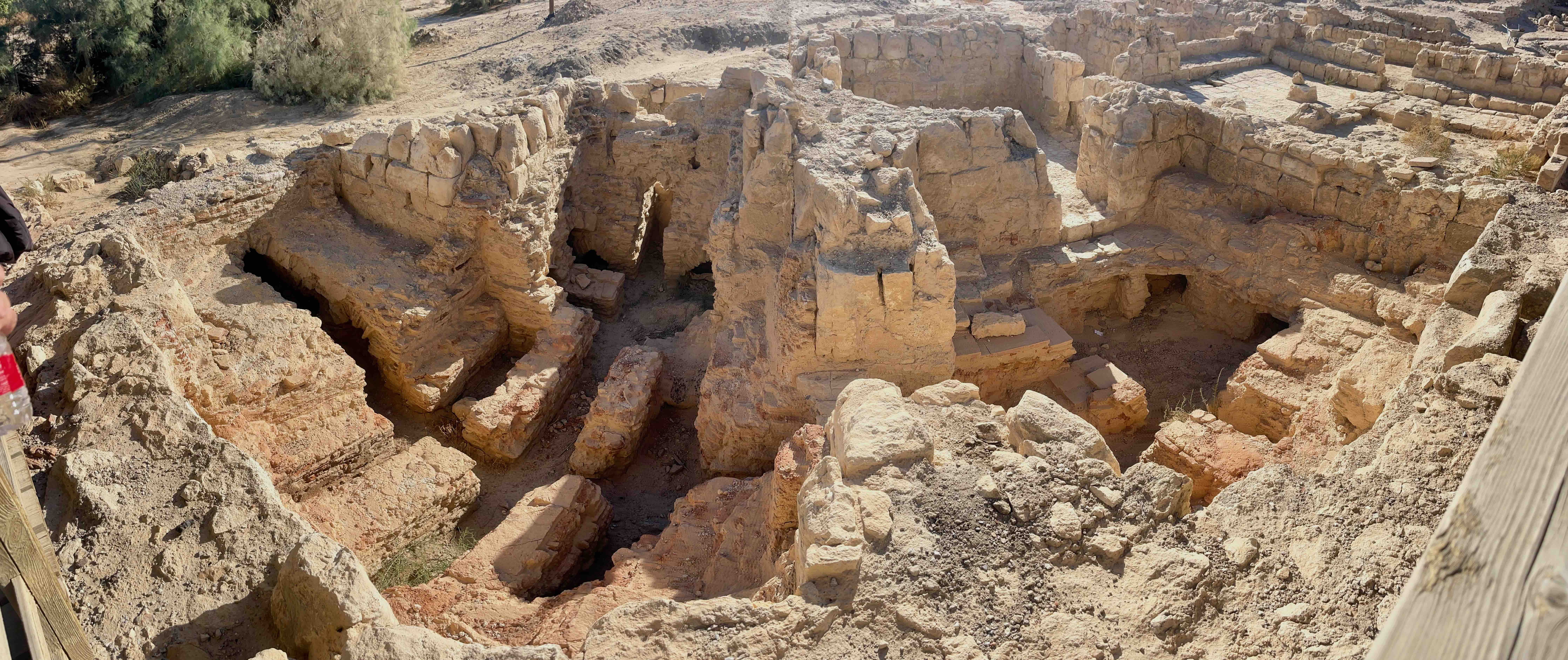Location and Identification:
En Hazeva, also known as Mezad Hazeva or ‘Ir Ovot, is situated in the central Arava valley. . The site was first identified in 1902 as a Roman fortress. In 1950 several Iron Age sherds were found at the site, suggesting an earlier Judean occupation. Yohanan Aharoni identified the site with biblical Tamar and Roman Tamara.
History and Biblical Context:
The site has seen occupation from the Late Iron Age I through to the Early Islamic period. It has been associated with Thamara of classical antiquity, mentioned in ancient sources like Ptolemy’s Geographia and Eusebius’s Onomastikon. Its strategic location was crucial for controlling access to the copper mines of Faynan and for military logistics during the Roman period.
Excavation History
The site was first excavated in 1972. Extensive excavations were carried out from 1987-1990. Six occupational strata have been identified at the site. Stratum 1 dates to the late Byzantine – early Islamic period (sixth-seventh centuries CE). Stratum 2, dating to the third-fourth centuries CE, is the level of the Roman fortress. A Roman bath was also found to the south of the fortress. Nabatean remains were found in Stratum 3, dating to first century CE. A small Judean or Edomite fortress and an Edomite shrine belong to Stratum 4, dating to the seventh-sixth centuries BCE. The largest fortress, a Judean fortress from the ninth-eighth centuries BCE, represents Stratum 5. Finally, traces of a tenth century BCE occupation has been uncovered in Stratum 6, but the extent and nature of the occupation has not been uncovered.
Findings:
Iron Age
The Iron Age at En Hazeva is characterized by the presence of significant architectural and defensive structures from Late Iron Age I, including a tower, as well as from Iron Age IIa and IIb, including a fortress. These remnants indicate the strategic importance of En Hazeva in controlling access to vital trade routes and resources, such as the copper mines of Faynan in the Arava valley.
Roman Period
Roman-period aqueduct built to convey floodwaters to agricultural areas, illustrating the engineering skills of its inhabitants and the importance of agriculture in the local economy. The site has also yielded evidence of significant seismic activity that affected its structures and use over time.



Sources
En Hazeva Yoram Haimi 09/10/2016 Final Report In October 2015, a salvage excavation was conducted in the Roman-period aqueduct at ‘ En Hazeva
En Hazeva Tali Erickson-Gini and Kathleen Moore Bekes 12/02/2019 Final Report
Stern, Ephraim-New Encyclopedia of Archaeological Excavations in the Holy Land 2-Israel Exploration Society (1993)

